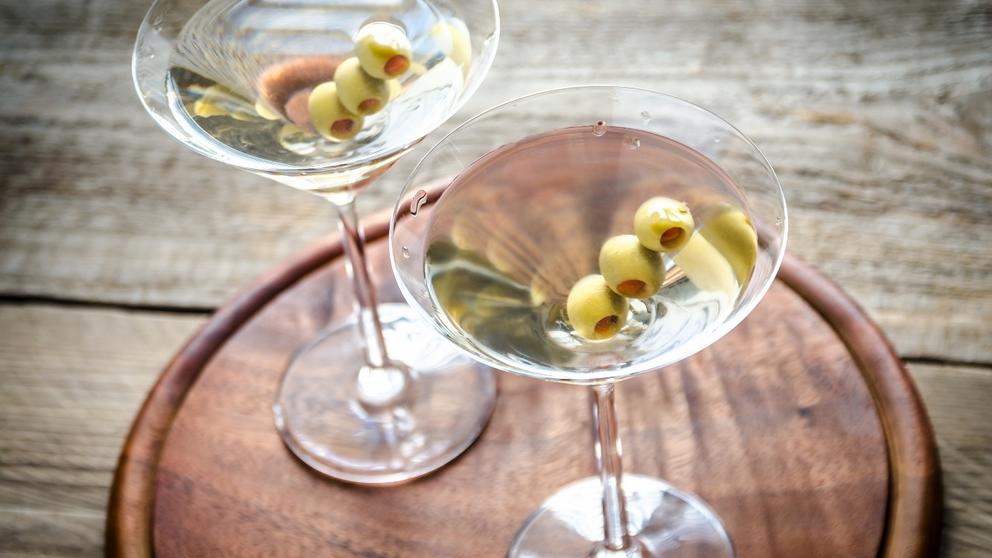Stylish, strong and with a devoted following, the martini is possibly the simplest, most universally- known classic cocktail. But it has many variations, and this make it seem like a daunting drink to learn and master for a bartender.
A wet Martini, or equal parts vermouth? What about or a gin martini or vodka? And exactly what is an extra dry martini? There are no end to the variations on offer with this cocktail.
Here are some tips on the different martini types, the terminology and how to make the perfect martini.
The Perfect Martini
It is relatively simple to master the recipe itself, but learning and remembering all of the questions to ask and the terminology is probably the hardest part.
To be forewarned, martini drinkers are often rather particular about how their drink is made, but adhere to their wishes, get their drink right and you’ll quickly become their favourite bartender!
Martini drinkers will also often give you their complete order when they ask you for their drink saying, for example: “a bone dry, vodka martini, shaken, served up with a twist”.
Here the customer has given you all the information that you need to produce their drink however, if they just order 'a martini' you need to decode what they want with a series of questions.
Gin v Vodka
You have your cocktail shaker ready, but the first you must decide which spirit will be your base. Gin or Vodka. Traditionally, gin was used, but the taste entirely depends on the individual. The first question you’re going to ask your customer is do you want 'vodka or gin?' And then, if they don’t state a particular brand, you should ask them if they have a preference.
Shaken or Stirred?
'Shaken not stirred' as Mr Bond famously said - but this innocuous phrase really shook things up the martini world; both literally and figuratively.
Before Sean Connery first uttered these words in 1962, martinis were rarely (if ever) shaken, now the opposite is true. In fact shaking a martini has become commonplace. Either way, this is the second question you should ask your customers after establishing which liquor they’d like.
Straight Up or on the Rocks?
To ice or not to ice? That is the third question you should ask.
Would your customer like the his drink served; straight up or on the rocks? Straight up is often referred to as just 'up', and this method is the most common style of martini. While on the rocks means you serve it over ice.
The Garnish

The final question to ask your guest is which garnish they'd like. There are two options: olives or a lemon twist, just referred to as a twist. If the customer desires a lime twist or even orange, they’ll tell you so.
Sometimes the garnish is implied rather than asked about, and when making a dirty martini the garnish is always an olive; unless the customer requests differently.
Every other martini can automatically be garnished with a twist if you like - meaning a strip of lemon peel will be twisted across the top of your drink, releasing aromatic oils into the cocktail.
Dry, Extra Dry, Bone Dry and Wet
These words refer to the amount of dry vermouth in the cocktail. It is worth noting that the ratios in every martini will vary from bar to bar. The original iteration of drink called for a 2:1 ratio of gin to dry vermouth, however the cocktail has evolved over many decades (as have people's taste) - and martinis are now more commonly served at a 5:1 or 6:1 ratio.
Each bar will have a slightly different standard recipe so make sure you know yours so that you’re serving the same as everyone else.
Dry - Ironically Dry means less dry vermouth. Usually the amount is halved, and the quantity of gin remains the same. A lemon peel garnish is optional.
Extra Dry - What is an extra dry martini? It means there is no vermouth at all!
Bone Dry - Chill a martini glass then rinse it with dry vermouth. Shake or stir your gin or vodka then strain into the chilled and rinsed glass. And voila, you have a bone dry martini!
Wet - As the opposite of dry, it stands to reason that a wet martini means mixing in extra dry vermouth. This can range from just doubling the amount, to making a 50:50 martini; half spirit, half vermouth. This is also be known as extra wet.
Dirty, Extra Dirty and Filthy
These all include the addition of olive juice, which is the brine from the olives that you use for garnish. Unlike with dry, extra dry, bone dry and wet, these modifiers mean exactly what you expect them to mean.
Dirty means a small splash of olive brine - usually half the amount of vermouth used
Extra dirty usually uses equal amounts of brine and vermouth.
Filthy A filthy will use even more than that... And some places will even replace the dry vermouth with olive brine!
Sweet
A sweet martini simply swaps the dry vermouth for a sweet vermouth. Simple!
Perfect
A perfect martini means equal part dry and sweet vermouth. Don’t add extra vermouth for this, simply halve the amount of dry vermouth you’d usually use and add the same amount of the sweet stuff.
The Gibson
A Gibson martini is identified by being garnished with a pickled onion. It is also this pickled onion which makes a Gibson a Gibson. Otherwise there are no differences besides the garnish between this and a regular martini.
Gibson martinis are also often dry and more often made with gin - however, you can choose vodka or gin - whichever spirit is preferred.
The martini is one of the only cocktails that can be personalised in so many well known ways. These last three iterations are the least common, but they’re still out there, so knowing what they mean is important.
If you are fascinated by the art of cocktails in general, this guide to what is a cocktail could be useful.

